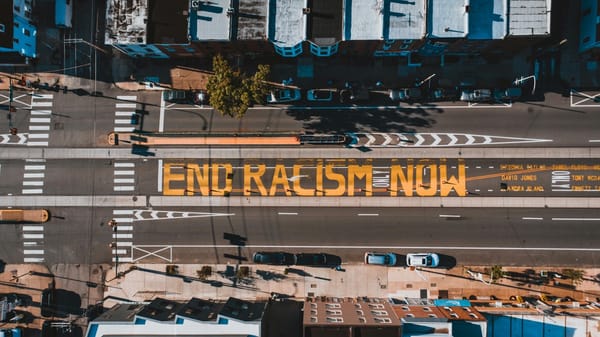A Look at the British Museums' Troubling History with Stolen Treasures
When will the looted artefacts be returned to their rightful owners?

Access the Audio Read version of this article directly on Spotify for Podcasters.
The first time I came in contact with Benin bronze sculptures and plaques, I was mystified. As a Nigerian, I was astonished to learn that such a large collection was held in a British museum, in an industry dominated by white people and generally kept in spaces that don't really welcome those whose culture is displayed.
I’m also not convinced British museum curators fully understand the real story and deeper meaning of the items, but it has to be told. The bronze sculptures and plaques were visual archives of the Kingdom of Benin at a moment in time when society did not heavily rely on written text to record their history, political situation, court customs and social life. Over 4,000 of the Benin bronze and ivory sculptures and plaques made by the Edo people of Nigeria have been looted and kept in Britain from the violent planned raid in 1897 by British soldiers. It wasn’t just as an act of revenge (the Edo people did not comply with the ludicrous demands from Britain and rebelled and killed several British soldiers), but it was also an economic move, as the sale of the sculptures compensated for the expense of the invasion. British soldiers colonised the city and burnt it to the ground, aided by machine guns. They looted the artefacts, selling them across Europe to wealthy patrons and institutions like the British Museum.
Nigeria’s National Commission for Museums and Monuments repeatedly call for the objects to be returned to their original homes. But according to the British Museum, they’re essentially unable to return the stolen artefacts. Parliament even passed a law known as the British Museum Act 1963 to ”keep the objects comprised in the collections within the authorised repositories of the Museum.” In Britain, many public museums follow a decree like the British Museum Act, such as the National Heritage Act 1983 and the Museums and Galleries Act 1992, which inhibit the repatriation of cultural goods.
The British Museum is not the only one with a legacy of keeping looted artefacts close. Other museums such as the Ashmolean in Oxford, The Natural History Museum in London, The National Museum in Scotland, The Victoria and Albert Museum and more all have a hand in it. What museums are really doing is upholding false illusions of an empire. The looted items on display represent their idea of what the world should look like, methodically arranged in individual rooms. They rewrite history to position them in a favourable light and influence the masses.
The truth is that many stolen antiquities have arrived in Britain in huge bulks with little to no information. The ones that get seen in the wider public have a large part of their history rewritten, while the vast majority of looted items never make it out in the light of day, hidden and collecting dust in store rooms and private collections. Far away from their home and housed in bleak spaces, the spiritual essence of the artefacts is removed, reduced to nothingness, as mere objects to look at. They become instruments of race and racism.
Descriptions of stolen works in museums often detract from the original story of the item's provenance, whitewashing its history. There is a general ongoing ignorance within the industry that these nations did not have a past before colonisation or resisted foreign invasion. This harmful narrative not only affects the very society that had its objects looted and pillaged, but it also removes a major aspect of their civilisation, impacting its people through generations. Children grow up not knowing much about their heritage.
Sadly, large chunks of information on many historical objects have been lost during the time of theft. An area the imperialists at the time deemed unimportant. To them, the lack of details, the better. Who cared about some ‘primitive’ and ‘uncivilised’ society? Rewriting descriptions enabled them to control the narrative of superiority and promote white supremacy. These acts diminish the cultural identity and survival of societies whose stolen works illustrate a prominent part of their human agency and their collective existence in the world.
With Brexit, and the shift towards a more ‘global Britain,’ a big topic of consideration and dialogue is how the UK confronts its colonial history, the case of cultural heritage and the barriers and issues surrounding the restitution of stolen artefacts. To prove that Black lives do matter, the old language of loaning items must change when they are returned to the country of origin, acknowledging that these artefacts were looted in the first place.
Fear not, museums will not be empty if they permanently remove the looted goods and return them to their homeland. But if they want to continue being relevant, it's high time they look for ways to change how they operate as a whole and create a community for open discourse and learning. Not be a space to present their imperious authority like a cold, fortified castle, alienating people in particular ethnic minorities.
This history is about today, and it is about change; not some bygone era that the artefacts have no relevance in. British museums must show that African artwork is the product of ingenuity, memory, history and cultural significance in communities, not trophies of an empire.





